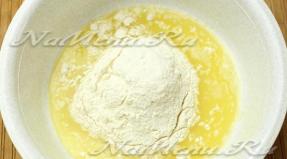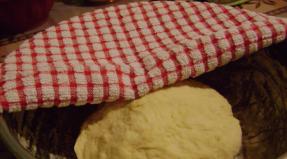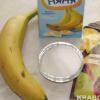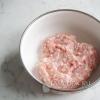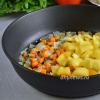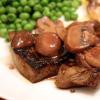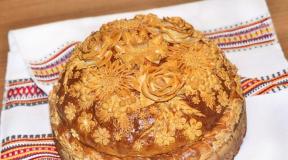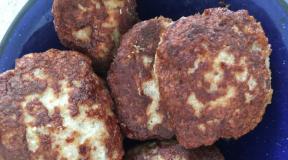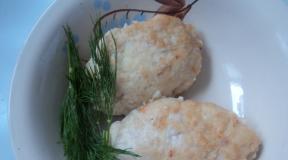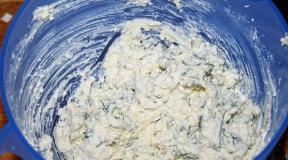How to determine the percentage yield of the finished product. Radchenko L.A.
The norms for the investment of raw materials, the yield of semi-finished products and finished culinary products and dishes, as well as the norms of waste during the primary processing of raw materials and losses during the heat treatment of products are established by collections of recipes for dishes and culinary products for public catering enterprises.
There are different collections of recipes for dishes and culinary products, but it is necessary to be guided by the current regulatory documents. There are collections of recipes for canteens at industrial enterprises, higher and secondary specialized educational institutions, canteens of vocational educational institutions.
The principle of building collections is the same. It gives recipes for dishes, cold snacks, flour products, drinks, etc. The recipes are presented in three versions in three columns. The first column provides for the widest range of raw materials and higher rates for storing meat, fish and fat products. The first option is used mainly in restaurants. The second column includes a less wide range of raw materials and provides for lower input rates for raw materials. It is mainly used in canteens, eateries and cafes of the second category. The third column is used in enterprises serving industrial workers, students, and others.
The collection of recipes for dishes and culinary products for public catering enterprises consists of two parts. The first part provides a calculation of the consumption of raw materials, the output of semi-finished products and finished products. When establishing the norms of waste and yields of semi-finished meat products, culinary cutting of carcasses of cattle and small livestock is the basis.
Waste and stripped parts yield is given for all types of chilled meat products. In this case, waste rates are given for whole carcasses or half carcasses. When receiving meat in separate parts, for which a different percentage of waste is established, determining the laying of gross raw materials, it is necessary to make a recount, since the recipe provides for the input rate of raw materials in net weight.
For cooking, for example, boiled meat from different parts of the carcass with a different percentage of waste, it is necessary to lay a different gross weight. If for the preparation of portions of cooked meat weighing 75 g, net meat is required 121 g and gross (with an average waste of beef of category I of 26%) 164 g, then when the hind leg of the carcass with 23% waste goes into production, to obtain a portion of the same weight less product gross required:
121x100 / 100-23 = 157 g.
This is how the gross weight for meat delivered in separate parts is determined.
Upon receipt of non-standard raw materials, the filling rate is determined according to the same calculation in accordance with the actual waste, for which in each individual case an act is drawn up in accordance with the established procedure. Waste is determined at the enterprise by means of control studies.
The norms of waste and the yield of semi-finished products during cold processing of fresh and salted fish are established in accordance with the accepted methods of culinary cutting for fish of three sizes: large, medium and small. The recalculations are made in the same way as the recalculations given for meat.
Waste rates are set for fresh fish frozen in briquettes. Waste is increased by 6% due to losses during defrosting. For live fish (bream, carp, carp, tench, crucian carp, sterlet) used in the preparation of portioned dishes, the yield of the finished product is not standardized, but is calculated based on the established waste and losses during the culinary processing of fish based on the actual gross weight of each specimen.
Waste rates for vegetables and fruits in the collection are given based on raw materials that correspond to the quality of the current GOST.
For vegetables with different waste, depending on the season of the year, a different percentage of waste is established. For example, for potatoes, carrots and beets until January 1, waste was set at 25, 20 and 15%, respectively, and from January 1 - 30, 25 and 20%, i.e. 5% more. Based on this, when preparing the same dish for laying net vegetables at different times of the year, you should take a different gross amount.
For example, in the recipe for borscht, in accordance with the above-mentioned waste rates, the following rate for laying potatoes, carrots and beets (g) is established:
In the period after January 1, at the waste rate for this time, according to the table of the collection, per 100 g net potatoes (peeled), 143 g gross potatoes are required. According to the recipe, potatoes with a net weight of 75 g should be laid in borscht; to obtain this amount, you should take:
143/100 x 75 = 107 g gross potatoes.
The same procedure determines the gross weight of beets and carrots.

For the preparation of meals from cereals, the collection contains the norms for the attachment of cereals, the amount of water in weight units and the output of ready-made cereals in volume units.
The norms of liquid for cereals provide for cooking them in boilers with a capacity of 30–80 liters. Depending on the cooking conditions, the shape and size of the dishes, the liquid rate can be increased up to 10% for crumbly and up to 2-3% for other cereals.
When boiling cereals in boilers with a capacity of 125–150 liters, the liquid rate decreases, and when boiling in low and shallow containers, it increases.
The norms of liquid for cooking porridge are indicated per 1 kg of dry cereal. If porridge is prepared from cereals, which are washed before cooking, it must be borne in mind that a significant amount of water remains in the cereal during washing - within 10–30% of the weight of dry cereal.
To maintain the required ratio of cereals and water when cooking cereals from washed cereals, you should use the volumetric coefficient, that is, take into account the total volume of washed cereals together with the required amount of water. The collection indicates how much volume (l) should take 1 kg of washed cereals together with water. Knowing the volumetric coefficient, it is possible to determine the total volume of cereal and water in the boiler for a given number of portions.
The bread yield is the minimum allowable amount of finished products obtained from 100 kg of flour and other raw materials, added to the dough in accordance with the approved recipe.
The bread yield (Vhl) is determined by the dough yield (W) and technological costs (Z) and losses (P).
Technological costs (C) in bakery production is the consumption of flour mass, semi-finished bakery products and finished products, due to the course of the technological process of bread production and storage. Technological costs in the production of bread must be reduced to the optimum value.
The bread yield (Vhl) is calculated by the formula:
Vhl = W - (P + Z),
where Vhl is the yield of bread from 100 kg of flour and corresponding to the recipe quantities of other raw materials, kg;
W - output of dough from 100 kg of flour, kg.
Z = Zbr + Zrezd. + Zup + Zus.total,
where Збр - costs of dry matter during fermentation of semi-finished products (liquid yeast, starter cultures, dough), kg;
Zrazd. - the cost of flour for cutting dough, kg;
Zup - decrease in the mass of baked dough pieces (VTZ) during baking, kg;
Zus.total - the general decrease in the mass of baked bread as a result of drying out in the period from the moment the bread leaves the oven until the end of its storage at the bakery, kg;
The value Zus.total is the sum of the values Zukl and Zus., Where
Zukl - a decrease in the mass of baked bread during transportation from the oven when stacked in trays, trolleys or other devices;
Zus - a decrease in the mass of bread laid on trolleys and other devices during subsequent storage - shrinkage, kg.
P = Pm + Pt + Pkr + Psht + Pper.br,
where PM is the loss of flour before the start of mixing the semi-finished product, kg;
Fri - mechanical loss of dough, as well as a certain amount of flour during kneading and mixing of semi-finished products and at the stage of dough cutting before planting dough pieces in the oven, kg;
Пкр - losses in the form of crumbs, scrap bread, resulting from the extraction and transportation of bread in a bakery, placing it on trays, trolleys or other devices, kg;
Psht - losses from inaccuracy in the mass of piece bread, kg;
P per.br. - losses during processing of grain scrap, kg.
The above list of losses shows that they are technologically unnecessary and not justified, they are caused by imperfection or unsatisfactory condition of the equipment or its operation.
The test yield is calculated by the formula:
W = [Ms · (100 - Wc)] / (100 - Wt),
where W is the output of the dough (from 100 kg of flour), kg;
Ms is the total mass of raw materials consumed for the preparation of dough (from 100 kg of flour) according to the bread recipe, kg;
Wc - weighted average moisture content of raw materials,%;
Wт - moisture content of the dough after kneading,%.
The weighted average moisture content of raw materials is determined by the formula:
Wc = [(Mm.rzh · Wm.rzh) + (Mdr · Wdr) + (Msol · Wsalts)] / Ms,
where Mm.rzh is the mass of processed rye flour (100 kg);
Wm.rzh - moisture content of processed rye flour,% (14.5);
Mdr is the mass of yeast per 100 kg of flour, kg (0.06);
Wdr - yeast moisture, (75)%;
Msols - the mass of salt per 100 kg of flour, kg (1.5);
Wsalts - salt moisture content, (3.5)%.
Wc = / 137.4 = 10.6%
Let's find the test output:
W = / (100 - 52) = 256kg
Calculation of the yield of bread in bakeries
To calculate PM, K = 0.1
PM = K (100 - 14.5) / 100 - Wt (kg)
PM = 0.1 (100 - 14.5) / 100 - 52 = 0.2 kg
To calculate Pt, K = 0.05
Fri = K (100 - 14.5) / (100 - Wt) (kg)
Fri = 0.05 (100 - 14.5) / (100 - 50) = 0.09 kg
To calculate the Zbr, K = 2.0
Zbr = K 0.95 Ms (100 - Wc) / 1.96 100 (100 - Wt) (kg),
where 1.96 is the conversion factor of the amount of alcohol to sugar spent on fermentation during the formation of a given amount of alcohol;
0.95 is the conversion factor of the amount of alcohol to the equivalent amount of carbon dioxide (CO2).
Zbr = 2.0 0.95 137.4 (100 - 10.6) / 1.96 100 (100 - 52) = 2.5 kg
To calculate Zrep, K = 0.6
Zrazd = K (W - Q) / 100 (kg),
where Q = Pm + Fri + Zbr = 0.2 + 0.09 + 2.5 = 2.8 kg
Zrazd = 0.6 (256 - 2.8) / 100 = 1.5 kg
To calculate Zupek, K = 8.5
Zupec = K (W - Q1) / 100 (kg),
Q1 = Pm + Fri + Zbr + Zrazd = 0.2 + 0.09 + 2.5 + 1.5 = 4.3 kg
Zupek = 8.5 (256 - 4.3) / 100 = 21.4 kg
To calculate Zukl, K = 0.7
Zukl = K (W - Q2) / 100 (kg),
Q2 = PM + Fri + Zbr + Zrazd + Zupek
Q2 = 0.2 + 0.09 + 1.7 + 1.03 + 14.5 = 25.7 kg
Zukl = 0.7 (256 - 25.7) / 100 = 1.6 kg
To calculate Zus, K = 4.0
Zus = K (W - Q3) / 100 (kg),
Q3 = PM + Fri + Zbr + Zrazd + Zupek + Zukl
Q3 = 0.2 + 0.09 + 2.5 + 1.5 + 21.4 + 1.6 = 27.3 kg
Zus = 4.0 (256 - 27.3) / 100 = 9.2 kg
To calculate Pcr, K = 0.03
Pcr = K (W - Q4) / 100 (kg) + Zukl + Zus,
Q4 = PM + Fri + Zbr + Zrazd + Zupek
Q4 = 0.2 + 0.09 + 2.5 + 1.5 +21.4 = 25.7 kg
Pcr = 0.03 (256 - 25.7) / 100 + 1.5 + 9.2 = 0.06 kg
To calculate Psht, K = 0.4
Psht = K (W - Q5) / 100 (kg),
Q5 = Pm + Fri + Zbr + Zrazd + Zupek + Zukl + Zus + Pkr
Q5 = 0.2 + 0.09 + 2.5 + 1.5 +21.4 + 1.6 + 9.2 + 0.06 = 36.6 kg
Psht = 0.4 (256 - 36.6) / 100 = 0.9 kg
To calculate Pbr, K = 0.02
Pbr = K (W - Q6) / 100 (kg),
Q6 = Pm + Fri + Zbr + Zrazd + Zupek + Zukl + Zus + Psht
Q6 = 0.2 + 0.09 + 2.5 + 1.5 +21.4 + 1.6 + 9.2 + 0.9 = 37.4 kg
Pbr = 0.02 (256 - 37.4) / 100 = 0.04 kg
З = 2.5 + 1.5 + 21.4 + 1.6 + 9.2 = 36.2 kg
P = 0.2 + 0.09 + 0.06 + 0.9 + 0.04 = 1.3 kg
After calculating all costs and losses, the bread yield is determined:
Vhl = 256 - (36.2 + 1.3) = 218.5%
Actual Method for Calculating Yield
The actual bread yield (Vhl fact) is calculated by the formula:
Vhl fact = Mhl. total 100 / mm,
where Mkhl. total - the mass of all baked bread, kg;
Mm is the mass of flour consumed, kg;
Mhl is the mass of one loaf of bread, kg;
n - the number of baked products, pcs.
Mkhl. total = Mhl n
Mkhl. total = 0.7 3500 = 2450 kg
Vhl fact = 2450 100/1624 = 151%
To determine the savings or overconsumption of flour, you need to calculate the planned consumption of flour, i.e. the consumption of flour with exact observance of the rate of bread yield and compare it with the actual consumption. For such a calculation, you need to know the amount of products produced, the amount of flour consumed and the planned output, adjusted for the actual moisture content of the flour.
The bread yield (in kg) for flour moisture equal to 14.5% is calculated by the formula:
Vhl plan = (Vhl fact 100) / 100 - (Wm - 14.5),
where Vhl plan is the planned output, set for the basic flour moisture (14.5%);
Vhl fact - actual bread yield;
Wm is the moisture content of the processed flour.
Vhl plan = (151 100) / 100 - (14.5 - 14.5) = 151%.
Thus, we have calculated the production recipe, dough piece weight and finished product yield.
the procedure for delivering products to the dining room from the warehouse
After the distribution of the soldering products among the dishes, their yield is calculated.
The output of the first course should be 0.7 l, including a thick part (cereals, vegetables, potatoes,) not less than 3OOg, viscous cereals - 280 - 320 g (when laying cereals 70 - 80 g), mashed potatoes (300 - 400 g when laying potatoes 400g).
The output of the second course is determined depending on the weight of meat (fish) portions and side dishes. Output of meat (fish) portions to your own. the queue depends on the type and fatness of the meat (type and variety of fish) and varies within the limits indicated in the table.
|
Boiled and stewed meat |
Grilled meat |
chopped |
|
|
Beef | |||
|
Mutton | |||
Output of fish portions from 100 g of fish.
Boiled fish
Fried fish
Fresh pike perch, bream,
pike, etc. Salted pike perch, bream,
pike, etc.
Fresh cod
(gutted, without
Salted cod
(gutted without
To determine the yield of the second course, which, for example, includes: meat - 100 g, potatoes - 430 g, onions - 20 g, mixed fat - 10 g, according to the table (Appendix 22) we find the output of mashed potatoes from 100 g of potatoes. For the period March - April, this yield is 84%, or from 430 g of potatoes we get 430x 84 = 361 g of puree. Onion yield
sauteed is 61%, or 12 g. The weight of the combined fat practically does not change. Therefore, the output of the finished puree will be 361 + 12 + 10 = 383g. From the same table we find that the yield of boiled meat from YOr beef of the 1st category as a whole from a carcass or half carcass is 46%, that is, 46g; this output is recorded in the "Weight of meat (fish) portions" column. Thus, the total output of the second course will be 383 + 46 = 429g.
The same procedure is used to calculate the weight of cereals and other dishes (Appendix 23, 24 and 25).
Based on the total consumption of food for a particular meal (breakfast, lunch, dinner), the content of proteins, fats, carbohydrates and calorie content is determined according to the rationing table according to the food ration standards.
If necessary, the content of vitamins and minerals is calculated using the same method according to the table. These data are calculated by the senior physician (paramedic) of the unit.
The final data of the layout for the content of proteins, fats, hydrocarbons in the diet, as well as for the caloric content, are compared with the same data on the norms of ration for soldiers' rations, and in case of large discrepancies, they are checked and the reason for the discrepancies is determined.
Lesson number 3 Organization of the work of the chefs and daily dress for the dining room.
Preparing the dining room, setting tables,preparing food for serving
Test cooking
Diet food
Sanitary and hygienic requirements for military food
Bread from wheat flour of the 1st grade (the dough is prepared in a thick dough using activated yeast).
The output (in kg) is calculated for each type of product according to the following formula
where is the bread yield, kg;
–The total amount of raw materials according to the recipe, kg;
–Weighted average moisture content of raw materials, kg;
- moisture content of the test;
- costs during fermentation,% ;
–Peck,%;
–Drying,%.
The costs of fermentation are 2.5 - 3.0% in the preparation of the dough in thick doughs. The bale for baking rye and wheat pan bread is 6-8%, for round hearth rye and wheat bread weighing 0.8-1.0 kg - 8-8.5%. Shrinkage during storage of bread under normal conditions 3-4%; when stored in closed chambers - 2.8-3.2%; in closed containers - 2.5-3.0%.
The weighted average moisture content of raw materials (%) is determined by the formula
where is the mass of flour, salt, yeast, and other raw materials, kg (according to the recipe);
–Respectively the moisture content of flour, yeast, salt,%.
The moisture content of the dough (%) is determined based on the moisture content of the bread according to the formula
where is the moisture content of the bread,%;
n- the difference between the moisture content of dough and bread,%.
Depending on the type of processed flour and the type of product, it is accepted in the range from 0 to 1.5%.
n= 1 - 1, 2% (for wheat bread);
n= 0.2 - 0.5% (for baked goods and bakery products);
n= 1.0 - 1.5% (for rye bread).
The weighted average humidity is determined by the formula (8)
The moisture content of the dough is determined by the formula (9)
The bread yield (%) is calculated by the formula (7)
Orlovsky hearth bread (the dough is prepared with liquid leavened leaven).
Fermentation costs are: when preparing dough on thick doughs 1.7 - 2.0%; bale for baking round hearth rye and wheat bread weighing 0.8-1.0 kg - 8-8.5%; shrinkage during storage of bread under normal conditions 3-4%; when stored in closed chambers - 2.8-3.2%; in closed containers - 2.5-3.0%.
The weighted average humidity is determined by the formula (8)
The moisture content of the dough is determined by the formula (9)
We calculate the bread yield by the formula (7)
The obtained data on the output of products are summarized in table 7.
Table 7 - Output of bakery products 
3.4 Calculation of the need for raw materials, taking into account the norms of its storage. Calculation of the amount of raw materials consumed per day (in kg).
The amount of flour consumed per day (in kg) is determined by the formula
where is the amount of flour consumed per day, kg;
–Daily production of a product, kg;
–Output of bread, kg.
The required amount of other types of raw materials (kg / day) is determined by the formula
where is the amount of certain raw materials, kg / day;
A- the amount of certain raw materials per 100 kg of flour according to the recipe, kg.
Calculation of the stock of raw materials for bread from wheat flour of the 1st grade of molded
Bread is made from bakery wheat flour of the first grade.
Let's calculate the amount of first-grade flour consumed per day using the formula (10)
![]() ;
;
Let's calculate the amount of salt by the formula (12)
![]() .
.
![]() .
.
Calculation of the stock of raw materials for bread Orlovsky hearth.
Bread is made from peeled rye flour and bakery wheat flour of the second grade.
Let's calculate the total amount of flour consumed per day using the formula (10)
![]() .
.
Let's calculate the amount of peeled rye flour consumed per day according to the formula
where is the content of flour of this grade in the mixture, kg.
Let's calculate the amount of consumed bakery flour of 2 grade per day according to the formula (12)
Let's calculate the amount of salt by the formula (11)
![]() ;
;
Let's calculate the amount of molasses by the formula (11)
![]()
Let's calculate the amount of yeast according to the formula (11)
![]()
The results of calculations of the daily stock of raw materials are presented in table 8.
Table 8 Estimated data of the daily requirement of raw materials
|
Type of raw material |
Product name |
Total consumption |
||
|
Bread from wheat flour 1 grade molded |
Orlovsky hearth bread |
|||
|
Wheat baking flour 1 s | ||||
|
Wheat baking flour 2 s | ||||
|
Peeled rye flour | ||||
|
Table salt | ||||
|
Pressed bakery yeast | ||||
The stock of raw materials, taking into account the storage standards (kg), is calculated by the formula
where is the stock of raw materials per day, kg;
n- stock rate, days
For bread made from wheat flour of the 1st grade, molded
Let's calculate the stock of baking wheat flour of the 1st grade according to the formula (13)
Let's calculate the supply of table food salt according to the formula (13)
It's not a secret for anyone that all enterprises that do not work according to the Collection of recipes (technological standards) are obliged to develop a document "Technical and technological map". However, not everyone understands how the TTK differs from the Technological map, and how it should look. In this article, we will give a detailed answer to this question.
So, the requirements for the design of the TTK and the information contained therein are detailed in GOST 31987-2012. We will not describe in detail the content of GOST, we will limit ourselves only to a description of the main features.
In contrast to the Technological map, in the Techno-technological, along with the calculation of calorie content, an indication of the field of application, requirements for raw materials and requirements for sale and supply, it is necessary to calculate and indicate the following indicators:
- Organoleptic indicators
- Physicochemical indicators (mass fraction)
- Microbiological indicators for the corresponding food group
Below we give a methodology for developing the TTK, and describe in detail the calculation of all the necessary indicators. Such a methodology is based on the Methodological Guidelines, and all documents are generated automatically, in the program for chefs and technologists "Chef Expert".
Consider, for example, the calculation of all indicators for the TTK for the dish "Odessa Sausages"
|
1. Calculation of the nutritional and energy value of the dish |
||
|
The calculation of the nutritional and energy value of the dish is carried out on the basis of the methodology given in the Guidelines for laboratory control of the quality of public catering products, M., 1997, (Letter No. 1-40 / 3805 of 11.11.91) (Part 2). |
||
|
1.1. Determine the protein content in the first ingredient of the recipe - "Fat mesh (Spice)". We find the protein content in 100 grams of an ingredient according to the reference tables of the chemical composition recommended for use by the Federal Service for Supervision of Consumer Rights Protection and Human Welfare (Rospotrebnadzor). The protein content in 100 grams of the ingredient "Fat mesh (Spice)" = 1.4 grams. The net weight of the ingredient "Fat net (Spice)" according to the recipe = 42 grams, therefore, the amount of protein in the ingredient = 42/100 * 1.4 = 0.59 grams (article 7 in volume 1). This ingredient IS EXPLODED to heat treatment, therefore, the loss of protein during heat treatment is determined according to the reference data = 10% (article 10 in volume 1). Thus, the total amount of protein in the ingredient = 0.59 * (100-10) / 100 = 0.53 grams. (Article 14 in Volume 1) |
||
|
1.2. The ingredient "Fat mesh (Pryatina)" DOES NOT HAVE TECHNOLOGICAL LOSSES after heat treatment (article 13 in volume 1), therefore the total amount of protein in the ingredient = 0.53 * (100-0) / 100 = 0.53 grams. |
||
|
1.3. The "Fat Net (Spice)" ingredient is CONSIDERED in the dish outlet (article 17 in volume 1), therefore the protein content is CONSIDERED in the total protein content in the dish. |
||
|
1.4. Similarly, we determine the content of carbohydrates and fats in the ingredient. |
||
|
1.5. In the same way, we determine the content of proteins, fats and carbohydrates for all ingredients in the dish, and enter the data obtained in Table 1. |
||

|
2. Calculation of the mass fraction of dry substances * |
||
|
2.1. Determine the content of dry matter in the first ingredient of the recipe - "Fat mesh (Spice)". The content of dry substances in 100 grams of an ingredient is found on the reference tables of the chemical composition recommended for use by the Federal Service for Supervision of Consumer Rights Protection and Human Welfare (Rospotrebnadzor). The content of dry substances in 100 grams of the ingredient "Fat mesh (Spice)" = 94.3 grams. Net weight of the ingredient "Fat net (Spice)" according to the recipe = 42 grams, therefore, the amount of dry ingredients in the ingredient = 42/100 * 94.3 = 39.61 grams. |
||
|
2.2. The ingredient "Fat mesh (Pryatina)" DOES NOT HAVE TECHNOLOGICAL LOSSES after heat treatment (article 13 in volume 1), therefore the total amount of dry ingredients in the ingredient = 39.61 * (100-0) / 100 = 39.61 gram. |
||
|
2.3. The ingredient "Fat mesh (Spice)" is CONSIDERED in the outlet of the dish (article 17 in volume 1), therefore the content of dry substances is CONSIDERED in the total content of dry substances in the dish. |
||
|
2.4. Similarly, we determine the dry matter content for all ingredients in the dish, and summarize the obtained values. |
||
|
2.5. To convert to a percentage of the dry matter content in a dish, multiply the resulting amount by 100 and divide by the portion output (100 grams). |
||
|
2.6. We sum this percentage with the maximum permissible salt content in the dish = 1.33%. Thus, we get the Maximum (theoretical) dry matter content in the dish = 62.39%. |
||
|
2.7. The minimum permissible dry matter content is calculated using the formula: for first courses and sauces: 0.85 * Maximum dry matter content, for other dishes: 0.9 * Maximum dry matter content. 0.85 and 0.9 are coefficients that take into account the loss of dry substances during the cooking process and permissible deviations when portioning dishes. Thus, min. permissible dry matter content in the dish = 62.39 * 0.9 = 56.15%. |
||
|
* In accordance with Appendix 2 of the Guidelines for laboratory control of the quality of public catering products, M., 1997, (Letter No. 1-40 / 3805 dated 11.11.91), in this category of dishes, the mass fraction of dry substances is DETERMINED in laboratory analysis. |
||
|
3. Calculation of the mass fraction of fat ** |
||
|
3.1. Determine the amount of pure fat in the "Fat Net (Spice)" ingredient (the mass fraction of fat is taken into account only in the main fat-containing ingredients (butter, sour cream, milk, etc.)) by multiplying the net weight of the ingredient (in grams) by the fat content (in scales per 100 g of an ingredient, or in%) and dividing by 100. Data on the content of natural fat in cereals, meat products, etc. neglected. MJ = 42/100 * 0 = 0 grams. |
||
|
** In accordance with Appendix 2 of the Methodological Guidelines for Laboratory Control of the Quality of Public Catering Products, M., 1997, (Letter No. 1-40 / 3805 dated 11.11.91), in this category of dishes, the mass fraction of fat is NOT DETERMINED in laboratory analysis. |
||
|
4. Calculation of the mass fraction of sugar *** |
||
|
4.1. Determine the amount of pure sugar in the ingredient "Fat Net (Spice)" (the mass fraction of sugar in sucrose is taken into account only in sugar - sand, sugar - refined sugar, powdered sugar, etc.), by multiplying the net weight of the ingredient (in grams) by the content sugar (in grams. per 100 g of an ingredient, or in%) and dividing by 100. MDS = 42/100 * 0 = 0 grams. |
||
|
*** In accordance with Appendix 2 of the Guidelines for laboratory control of the quality of public catering products, M., 1997, (Letter No. 1-40 / 3805 dated 11.11.91), in this category of dishes, the mass fraction of sugar is NOT DETERMINED in laboratory analysis ... |
||
|
5. Calculation of the mass fraction of salt **** |
||
|
**** In accordance with Appendix 2 of the Guidelines for laboratory quality control of public catering products, M., 1997, (Letter No. 1-40 / 3805 dated 11.11.91), in this category of dishes, the mass fraction of salt is DETERMINED in laboratory analysis ... |
|
|
6. Microbiological indicators |
|
|
6.1. To determine microbiological quality indicators, we are guided by the Technical Regulations of the Customs Union TR CU 021-2011 "On food safety". |
|
A correctly formed Technical - technological map looks like this:


In general, the process of developing the TTK is not particularly difficult if you develop documents using a special program. Calculating all indicators on a calculator is very long and ineffective. You can learn more about the program for the development of Technological Documentation "Chief Expert" on the official website
